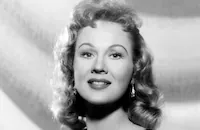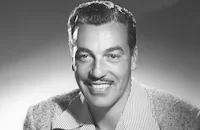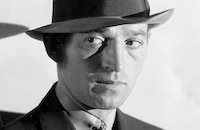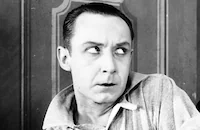The Story of Mankind

Brief Synopsis
Cast & Crew
Irwin Allen
Ronald Colman
Hedy Lamarr
Groucho Marx
Harpo Marx
Chico Marx
Film Details
Technical Specs

Synopsis
Two angels, appearing as stars in the heavens, discuss how man has invented the super H-bomb sixty years ahead of schedule. Noting that all of mankind will be destroyed if the bomb is detonated, the stars report the news to the High Tribunal of Outer Space, which is then called into session. Their agenda is to determine whether to prevent the bomb from detonating or allow it to go off. To present a defense, the Spirit of Man is called and The Devil, Mr. Scratch, who arrives with his apprentice, is appointed prosecutor of the case. The High Judge instructs Man and Scratch to visit any time or place on Earth to present supporting evidence, adding that their travels will be watched by the tribunal. Man begins by showing how humans developed from solitary animals to communities of people who harnessed fire and developed the wheel. Arguing that man's downfall began almost immediately, Scratch presents as evidence Khufu, an ancient pharaoh of Egypt who sacrificed 100,000 men to build his pyramid of immortality. Scratch proposes that Khufu succeeded in betraying his people because men, in their stupidity, worship villains as heroes. While conceding the point, Man reminds Scratch that the reverse is also true, that men cannot be great and good unless given the support of his fellows. As an example, he presents Moses, who, at around the same time, led his people to freedom and gave them the Ten Commandments, which he received from God. Scratch reminds him that the Commandments were soon broken and that war, rape and villainy continued, as shown in the story of Helen of Troy, in which thousands of men died fighting for her. Noting that myth and history are sometimes so intertwined that one cannot tell the difference, Man takes The Devil to the Golden Age of Greece, where Socrates, Plato, Aristotle, sculptors and the early astronomers elevated man's thinking to a new level, and there introduces the father of medicine, Hippocrates, whose oath is still held inviolate by physicians. In counterpoint, Scratch presents Cleopatra, who poisoned her brother, took advantage of Julius Caesar and betrayed Marc Antony before committing suicide. About his favorite subject, the depraved lunatic Nero who raved as Rome burned, Scratch claims that Romans were content to allow Nero's abuse of power. Man, however, disagrees, arguing that the people were not happy, and to prove it, shows early Christian martyrs praying as Roman soldiers arrest them and take them to their death. Despite the brutal times, Man says, a "new hope had come." Scratch then presents Attila the Hun, whose army swept across the world, trampling learning and faith. Showing King John's signing of the Magna Carta and the legend of King Arthur, Man says that civilization survived the brutality and that faith was not forgotten. Claiming that the treatment of Joan of Arc disproves Man's point, Scratch indicts the whole Middle Ages, but Man rebuts that the era gave rise to the Renaissance, a new age of thought, and Leonardo da Vinci, a symbol of the time whom others followed. Although The Devil asserts that some of da Vinci's inventions were forerunners of mighty weapons of war, Man argues that the peaceful da Vinci's work influenced Columbus' discovery of a route to the New World. Gleefully, Scratch tells the court how Cortez, another New World explorer, slaughtered the Aztec civilization and how Spain tried to rule and terrorize the seas. Man shows that Elizabeth I of England, inspired by the works of her contemporary, Shakespeare, stood up against the Spanish Armada and freed the seas from Spanish domination. While on the subject of the New World, Scratch reports that Peter Inuit cheated Indians out of Manhattan Island, the new colonies allowed slavery, people were hung as witches in Salem, and New World tobacco was introduced to the Old World by Sir Walter Raleigh. In England and Europe, unsanitary conditions led to a plague that was finally conquered by devastating fire. Undeterred, Man shows advances and discoveries in science, medicine and governance, among them Isaac Newton's discovery of gravity and the American founding fathers building a nation based on the premise that all men are created equal. Presenting Marie Antoinette and Napoleon as witnesses, The Devil argues that greed and lust for power continued and exhibits the Indian Wars, land grabbing and gold fever in America. While discussing the many wars on both continents, Scratch points to the American Civil War, but Man replies that the war resulted in Abraham Lincoln's Emancipation Proclamation. Man continues by noting the works of musicians and inventors, but, unimpressed, Scratch presents the evidence of World War I, the rise of Adolf Hitler and finally, World War II. When the final session of the High Tribunal of Outer Space is called to order, the High Judge warns that time is running out, as the explosion will soon occur, and asks for summations so that the judges will have time to reach a verdict. Directing himself to the judges, Man says that humans have often been misled by followers of Scratch, but they have survived and redirected themselves. He calls on one last witness, the Man of Tomorrow, who is a young child, and argues that, if there is no tomorrow, the past will have no meaning. The Devil asks the court to look closely at the child's toys, a gun and a sword, for an indication of the future. However, Man demonstrates that the gun plays music when "fired" and that the sword is only a pencil box. Placing the Bible on exhibit, he reads, "For him that soweth righteousness shall be a sure reward," and rests his case. After conferring, the judges conclude that man's good is equal to his evil, and so decide to reserve judgment for a future date. Man's destruction has been postponed, says the High Judge, but the court shall soon reconvene.

Director
Irwin Allen
Cast

Ronald Colman

Hedy Lamarr

Groucho Marx

Harpo Marx

Chico Marx

Virginia Mayo

Agnes Moorehead

Vincent Price

Peter Lorre

Charles Coburn

Cedric Hardwicke

Cesar Romero

John Carradine

Dennis Hopper

Marie Wilson

Helmut Dantine

Edward Everett Horton

Reginald Gardiner

Marie Windsor

George E. Stone

Cathy O'donnell

Franklin Pangborn

Melville Cooper

Henry Daniell

Francis X. Bushman
Jim Ameche
David Bond
Nick Cravat

Dani Crayne
Richard Cutting

Anthony Dexter
Toni Gerry
Austin Green
Eden Hartford
Alexander Lockwood
Melinda Marx
Bart Mattson

Don Megowan
Nancy Miller

Leonard Mudie
Burt Nelson
Tudor Owen
Ziva Rodann
Harry Ruby
William Schallert
Reginald Sheffield

Abraham Sofaer
Bobby Watson
Crew
Irwin Allen
Irwin Allen
Gordon Bau
Charles Bennett
Marjorie Best
Leon Birnbaum
Robert Brower
Ruth K. Greenfield
Roland Gross
John W. Hanley
Stanley Jones
Arthur Krams
Art Loel
Jean Mcchesney
Jack Mcedward
Nick Musuraca
Joseph Don Page
Gene Palmer
Irva Mae Ross
Paul Sawtell
George E. Swink
Robert Tracy

Videos
Movie Clip



Film Details
Technical Specs

Articles
The Story of Mankind
The casting can only be described as odd. Hedy Lamarr as Joan of Arc purportedly earned screams of laughter from the audience as she urged them to "Attack!" Agnes Moorehead plays Queen Elizabeth I, Dennis Hopper is Napoleon, comedian Marie Wilson appears as Marie Antoinette, and Peter Lorre struts about as the Emperor Nero. The Marx Bros. appear in the film, but never share a scene together with Groucho Marx as Peter Minuit, who bought Manhattan from the native Americans, Chico as a monk and Harpo - in an inspired bit of casting - as Isaac Newton, but instead of being hit on the head with only one apple as he discovers the theory of gravity, he is buried in them. Other choices seem more logical: Ronald Colman, with his elegance and golden voice plays The Spirit of Man, who argues with the Supreme Tribunal (led by Sir Cedric Hardwicke) in favor of the human race by pointing out the positive things we have achieved. Francis X. Bushman, who appeared in Cecil B. DeMille epics, plays Moses and Vincent Price is The Devil. Actor Jim Ameche, brother of Don, plays Alexander Graham Bell, which is a nod to his brother's hit film The Story of Alexander Graham Bell (1939).
With the exception of Colman, Hardwicke and Price who got their regular salaries because their parts were much larger, the other stars made $2,500 for their brief cameos that took about a day to film. Agnes Moorehead was so pleased with her own appearance in The Story of Mankind that she commissioned a portrait of herself in costume. Screenwriter Charles Bennett's experience was not as happy, later remembering "That was dreadful. Because Irwin wanted desperately to have the first [writing] credit on the story, so everything I wrote, he wanted to cut out. I hated everything to do with that picture."
Irwin Allen's own Cambridge Productions shot The Story of Mankind, which Warner Bros. agreed to produce. Many of the stock scenes came from the Warner Bros. vaults, with the Egyptian footage coming from Land of the Pharaohs (1955). It did not escape the notice of the critics who remarked on the amount of Warner Bros. stock footage used, especially in the latter half of the film, inferring that Allen had run out of ideas and taken the cheap way out.
Critics were unanimous in their drubbing of Allen and the film. The New York Times review of November 9, 1957 was titled, 'Story of Mankind' Unravels at Paramount. In it, the critic noted "Irwin Allen, the producer, director and co-writer of the movie, has faced up gamely to his towering challenge and gone down fighting on practically every count. The result is a protracted and tedious lesson in history that is lacking in punch, sophistication and a consistent point of view...As the cast list above indicates, he has assembled a battery of "name" actors to play the many famous figures that fumble their way through this charade. And he has given them handsome sets to move through and tasteful costumes to wear, and has lighted the whole business pleasantly for the color cameras. [T]he main trouble is that the debate as to the moral tendency of man -- for good or evil -- introduces every conceivable cliché. It is the kind of pontification that any kid who has ever dozed through a history class has learned to see through." The New Yorker described it as "[A] West Coast interpretation of history as it might have been made if one of the Warner brothers had been around to gas things up a little...Mr. Allen isn't quite as stupendous as Cecil B. DeMille, who was, of course, born with a CinemaScopic caul, but he does toddle admirably in the footsteps of the Master as he pursues the fortunes of forty-nine leading characters, forty-nine thousand subsidiary characters, and enough livestock to keep the King Ranch grazing lands chewed down to the roots. I don't think I could reasonably be expected to identify all the forty-nine leading actors in The Story of Mankind but I guess I should point out the Joan of Arc in question is Hedy Lamarr, who uses a kind of baby talk as evidence of the saint's virtues." Perhaps the funniest critique of the film came from Philip K. Scheuer of the Los Angeles Times who wrote "If the High Tribunal ever catches this picture, we're goners."
The Story of Mankind was a flop of the worst kind at the box office. It barely lasted a month in the theaters before being pulled, despite all the advertising and offers of discount tickets to students. It didn't hurt anyone's career, though. Irwin Allen continued to make movies, later gaining fame with his adventure films such as Voyage to the Bottom of the Sea (1961), and the disaster films The Poseidon Adventure (1972), The Towering Inferno (1974), and The Swarm (1978).
Producer: Irwin Allen
Director: Irwin Allen
Screenplay: Irwin Allen, Charles Bennett (writer); Henrik Van Loon (novel)
Cinematography: Nicholas Musuraca
Art Direction: Art Loel
Music: Paul Sawtell
Film Editing: Roland Gross, Gene Palmer
Cast: Ronald Colman (The Spirit of Man), Hedy Lamarr (Joan of Arc), Groucho Marx (Peter Minuit), Harpo Marx (Sir Isaac Newton), Chico Marx (Monk), Virginia Mayo (Cleopatra), Agnes Moorehead (Queen Elizabeth I), Vincent Price (Mr. Scratch/The Devil), Peter Lorre (Nero), Charles Coburn (Hippocrates).
C-100m.
by Lorraine LoBianco
SOURCES:
Hart, Henry, ed. Films in Review
"History on a Pinhead", The New Yorker, Nov 16, 1957
McGilligan, Patrick Backstory: Interviews with Screenwriters of Hollywood's Golden Age
The Motion Picture Guide
"The Story of Mankind Unravels at the Paramount", The New York Times 9 Nov 57
White, Patricia Uninvited: Classical Hollywood Cinema and Lesbian Representability
Youngkin, Stephen D., Bigwood, James, Cabana, Jr., Raymond G. The Films of Peter Lorre

The Story of Mankind
Virginia Mayo (1920-2005)
She was born Virginia Clara Jones in St. Louis, Missouri on November 30, 1920, and got her show business start at the age of six by enrolling in her aunt's School of Dramatic Expression. While still in her teens, she joined the nightclub circuit, and after paying her dues for a few years traveling across the country, she eventually caught the eye of movie mogul Samuel Goldwyn. He gave her a small role in her first film, starring future husband, Michael O'Shea, in Jack London (1943). She then received minor billing as a "Goldwyn Girl," in the Danny Kaye farce, Up In Arms (1944). Almost immediately, Goldwyn saw her natural movement, comfort and ease in front of the camera, and in just her fourth film, she landed a plumb lead opposite Bob Hope in The Princess and the Pirate (1944). She proved a hit with moviegoers, and her next two films would be with her most frequent leading man, Danny Kaye: Wonder Man (1945), and The Kid from Brooklyn (1946). Both films were big hits, and the chemistry between Mayo and Kaye - the classy, reserved blonde beauty clashing with the hyperactive clown - was surprisingly successful.
Mayo did make a brief break from light comedy, and gave a good performance as Dana Andrews' unfaithful wife, Marie, in the popular post-war drama, The Best Years of Their Lives (1946); but despite the good reviews, she was back with Kaye in The Secret Life of Walter Mitty (1947), and A Song Is Born (1948).
It wasn't until the following year that Mayo got the chance to sink her teeth into a meaty role. That film, White Heat (1949), and her role, as Cody Jarrett's (James Cagney) sluttish, conniving wife, Verna, is memorable for the sheer ruthlessness of her performance. Remember, it was Verna who shot Cody¿s mother in the back, and yet when Cody confronts her after he escapes from prison to exact revenge for her death, Verna effectively places the blame on Big Ed (Steve Cochran):
Verna: I can't tell you Cody!
Cody: Tell me!
Verna: Ed...he shot her in the back!!!
Critics and fans purred over the newfound versatility, yet strangely, she never found a part as juicy as Verna again. Her next film, with Cagney, The West Point Story (1950), was a pleasant enough musical; but her role as Lady Wellesley in Captain Horatio Hornblower R.N. (1951), co-starring Gregory Peck, was merely decorative; that of a burlesque queen attempting to earn a university degree in the gormless comedy, She¿s Working Her Way Through College (1952); and worst of all, the Biblical bomb, The Silver Chalice (1954) which was, incidentally, Paul Newman's film debut, and is a film he still derides as the worst of his career.
Realizing that her future in movies was slowing down, she turned to the supper club circuit in the 60s with her husband, Michael O'Shea, touring the country in such productions as No, No Nanette, Barefoot in the Park, Hello Dolly, and Butterflies Are Free. Like most performers who had outdistanced their glory days with the film industry, Mayo turned to television for the next two decades, appearing in such shows as Night Gallery, Police Story, Murder She Wrote, and Remington Steele. She even earned a recurring role in the short-lived NBC soap opera, Santa Barbara (1984-85), playing an aging hoofer named "Peaches DeLight." Mayo was married to O'Shea from 1947 until his death in 1973. She is survived by their daughter, Mary Johnston; and three grandsons.
by Michael T. Toole
Virginia Mayo (1920-2005)
Quotes
Trivia
This is the final film completed by the Marx brothers.
The Marx brothers are never seen together in this film.
Notes
The film concludes with the High Judge looking into the camera and saying, "The choice is entirely up to you." As noted in the Variety review, the first fifty-five seconds of the opening credits show twenty-five successive above-title cast names. Although forty-nine actors are credited in the opening sequence, only the twenty-four names appearing below the title appear in alphabetical order. According to a November 1956 Hollywood Reporter news item, Warner Bros. had considered alphabetizing all names except for Ronald Colman, who would receive top billing. The opening literary credit reads: "Based on the classic by Hendrik van Loon."
After the opening credits, voice-over narration by Colman begins, "Once upon the time there were two angels...," followed by narration by two other actors, who portray the voices of angels. In the scenes depicting the proceedings of the High Tribunal of Outer Space, judges sit behind tall podiums in front of a semi-circle of seated, unnamed characters dressed in various historical costumes. The set is grounded in fog and the background is a deep blue. As noted in a November 1956 Los Angeles Times article, the "mankind on trial" portion of the film was a "gimmick" added for the film and not present in Hendrik Van Loon's original novel. According to the article, producer-director-writer Irwin Allen planned to end the film without revealing the High Tribune's decision, then flash a written question onscreen, "Is this the end?"
Interspersed with trial scenes are sequences depicting historical events on Earth. As noted in the Variety and Motion Picture Herald reviews, color footage from several old Warner Bros. films was used for many of the Earth sequences, among them, the 1954 King Richard and the Crusaders (see entry above) and the 1938 The Adventures of Robin Hood. According to a March 1957 New York Herald Tribune article, the Land of the Pharaohs footage used in The Story of Mankind was cut from the original film. The article added that portions of 1950 Victor Fleming production Joan of Arc also appeared in The Story of Mankind. Although most of the historical footage was taken from Warner Bros. productions, two films, Forever Amber (1947) and Drums Along the Mohawk (1939, for both) were produced by Twentieth Century-Fox. Other films from which historical scenes were taken, according to modern sources, were Helen of Troy, The Private Lives of Elizabeth and Essex, Captain Horatio Hornblower, Dodge City, San Antonio, The Command and Gold Is Where You Find It. A March 1957 Hollywood Reporter news item reported that the Pearl Harbor sequence featured previously unexhibited footage taken by Hawaiian businessman Robert T. Loring.
In reviews and in the copyright record, actor Leonard Mudie's name is erroneously spelled "Mudi." Although an October 1956 Hollywood Reporter news item reported that Diana Lynn was cast, she was not in the released film. A November 1956 Hollywood Reporter news item reported that Yvonne DeCarlo, who was originally cast as Cleopatra, withdrew from the film due to overlapping commitments and was replaced by Virginia Mayo. Ten-year-old Melinda Marx, who portrayed an early Christian child, was the daughter of Groucho Marx, who portrayed "Peter Minuit." Austin Green, who portrayed "Abraham Lincoln," was a weatherman for KNTX-TV. Jim Ameche, who portrayed "Alexander Graham Bell," was the brother of Don Ameche, who portrayed the inventor in the popular 1939 film, The Story of Alexander Graham Bell.
The Story of Mankind marked the final film of longtime star Colman and Franklin Pangborn, both of whom died in 1958. The picture also marked the last joint screen appearance of Groucho, Harpo and Chico Marx, although they played only cameo roles. Their last film appearance as a team was the 1950 United Artists' release Love Happy. A December 6, 1956 Hollywood Reporter news item reported that the rough cut of the film was five hours, which Allen planned to trim by two to three hours. According to a December 19, 1956 Hollywood Reporter news item, Dennis Hopper completed additional scenes after the principal photography to expand his role of "Napoleon" by four minutes.
Regarding the central question of the film, i.e., whether man's good nature outweighs his bad, the film's reviewers were more definite than the High Tribunal. The Variety review remarked: "In the dreary cataloguing of man's crimes against humanity, the Devil makes a much better case." Agreeing, the Motion Picture Herald reviewer wrote, "Much of what is good [about man] is only talked about, never shown, and the devil's disciples appear to have a ringing victory." Several reviews found that the script's occasional treatment of historical events with humor made the film feel uneven.
June 1953 Daily Variety and Hollywood Reporter news items reported that Bernard Foyer had acquired the rights to make several feature films and a color telefilm series of Van Loon's The Story of Mankind, which had been translated into twenty-nine languages. The Daily Variety news item announced that Ferde Grofe would compose the score and that the film would be shot in Eastman Color. Although the Hollywood Reporter news item stated that filming would begin in Aug, no other information about those projects were found.

Miscellaneous Notes
Released in United States Fall November 1957
The Marx Brothers appear in separate sequences.
Released in United States Fall November 1957













